While many birds migrate to Central and South America or the Caribbean during the winter, there are plenty of birds that spend their winters in Georgia. The birds that live in Georgia year-round are typically the most recognizable in the area, and it’s not hard to find them.
You can scope out a nice variety in your backyard or venture into nature to seek out some others. Sometimes you’ll even see birds that spend their winters in Georgia while walking around town or visiting local areas. Depending on your location within the state, you’ll see some of the following birds during winter in Georgia:
1. Carolina Chickadee
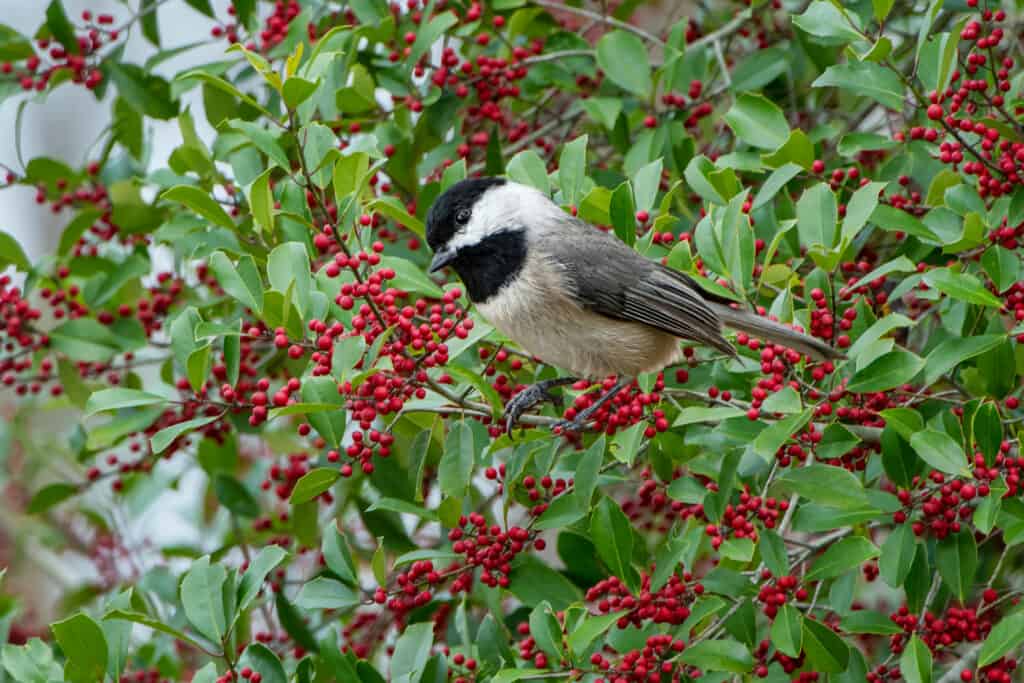
Carolina chickadees live in Georgia year-round, so there’s a good chance you’ll spot one in winter.
©Bonnie Taylor Barry/Shutterstock.com
These birds are tiny, growing to only 3.9-4.7 inches long, with round black and gray bodies. They have a black cap that stands out in stark contrast to their white cheeks.
Carolina chickadees prefer to live in forested areas but also don’t mind backyards and parks. They tend to dart back and forth from bird feeders to cover, continuing until they’re finished eating.
2. Chipping Sparrow

Look for the rust-colored crown to spot a chipping sparrow in the wild.
©Glenn Price/Shutterstock.com
These long-tailed birds have gray bellies and black and brown streaks on their back. Chipping sparrows have a rust-colored crown and a black line on their face that goes through their eyes. Their colors are more defined during the summer and light up during the winter.
When you’re looking for a chipping sparrow, look in small flocks on open ground. They also come into backyards often, searching for birdseed. Since these birds prefer being on the ground, they’ll often pick up any birdseed spilled beneath the feeder.
3. Northern Cardinal
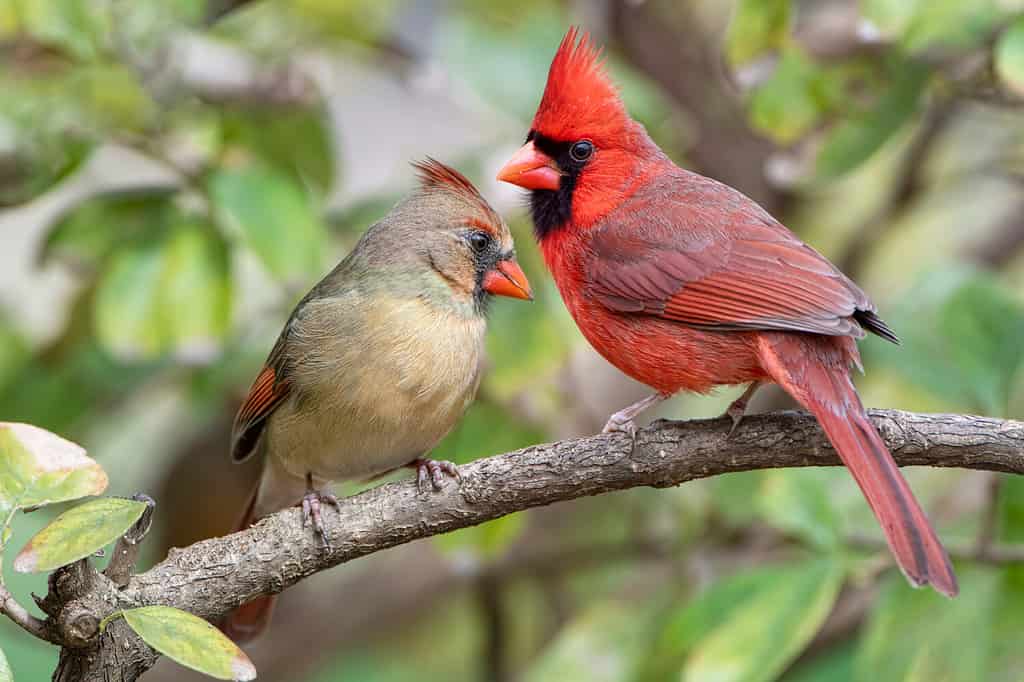
Male and female northern cardinals look a little different, but they both have a bright red beak.
©Bonnie Taylor Barry/Shutterstock.com
Male northern cardinals are bright red, including on their crest and beak, with black around their face. Females are brown with red highlights, and they have red beaks. Northern cardinals eat fruit, seeds, and insects, and they typically find their food in dense vegetation.
4. Tufted Titmouse
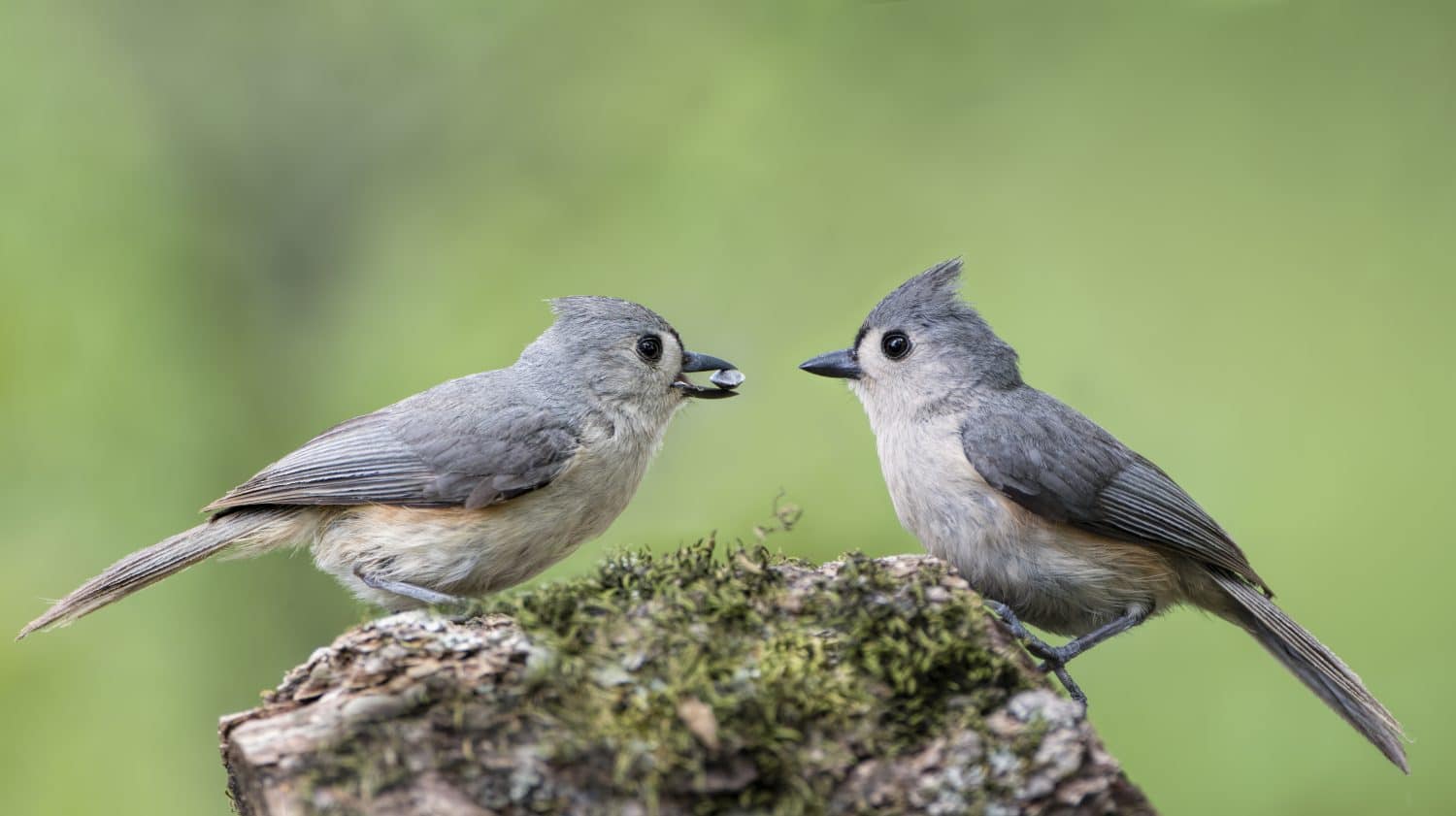
Tufted titmice often flock with other birds so you won’t usually see them alone.
©Bonnie Taylor Barry/Shutterstock.com
These birds have gray backs and feathers, a white front, a gray chest, and large black eyes. A tufted titmouse flocks with other birds, including nuthatches, chickadees, and woodpeckers, so it can be hard to spot when it’s on the move.
You can find them in parks, backyards, and woodlands, so be mindful if you’re looking for them while you’re out and about. They’ll often push smaller birds out of their way to get food.
They eat insects in summer and nuts, berries, and seeds the rest of the year. Tufted titmice also love backyard bird feeders, so fill yours up if you want to see them through your window.
5. Downy Woodpecker

The downy
woodpecker
is easily identifiable based on the white spots on its wings and its small size.
©J Edwards Photography/Shutterstock.com
Downy woodpeckers are the smallest woodpecker species in North America, only growing up to 6.7 inches long. They have white spots on their black wings, and you’ll also notice white underbodies and striped black and white heads. Male downy woodpeckers also have a red spot on the back of their heads, while females don’t develop this characteristic.
You can find downy woodpeckers in wooded lots, city parks, backyards, and near streams. They prefer eating beetle larvae and insects but will also settle for acorns, grains, and berries, especially during winter.
6. Red-Bellied Woodpecker
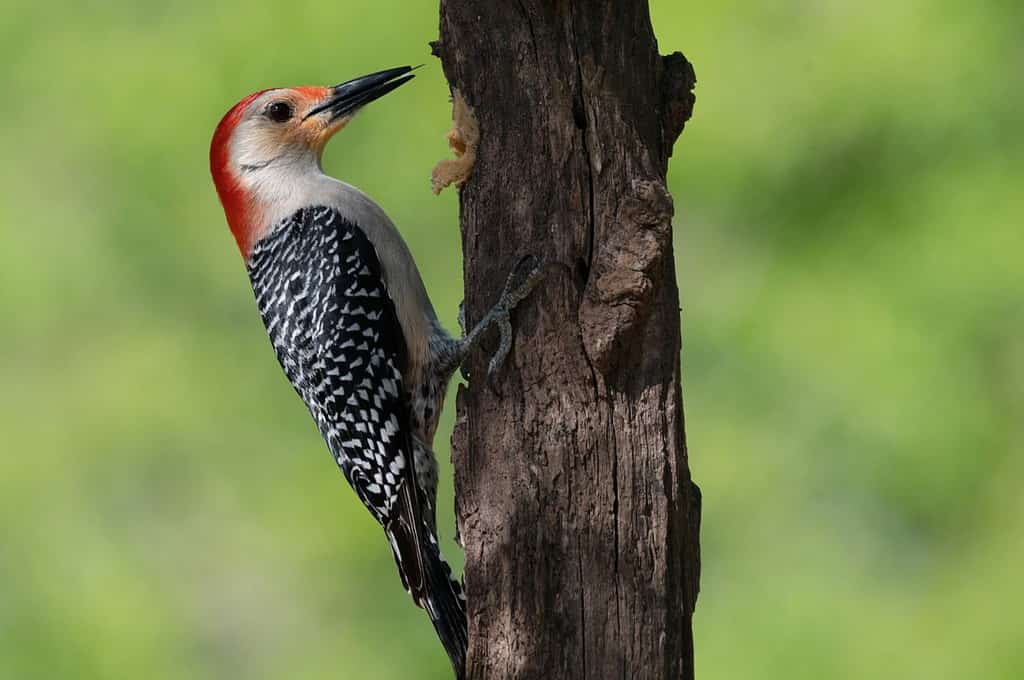
Male red-bellied woodpeckers develop a red cap while females don’t.
©Connie Moore/Shutterstock.com
Red-bellied woodpeckers look like red-headed woodpeckers but are much smaller. The males have a red cap, which leads to the frequent mix-up. However, female red-bellied woodpeckers lack the red cap and instead have red toward the back of their head.
Red-bellied woodpeckers have a gray and black body and black and white markings all over their back. Their red belly is sometimes hard to spot, but it is there.
They eat insects, seeds, nuts, fruit, and occasionally nestlings. If you’re looking for them, they nest in dead trees and stay in their location yearly. Once you find their nest, it’ll likely be there in the following years, too, as long as it is undisturbed.
7. Brown-Headed Nuthatch
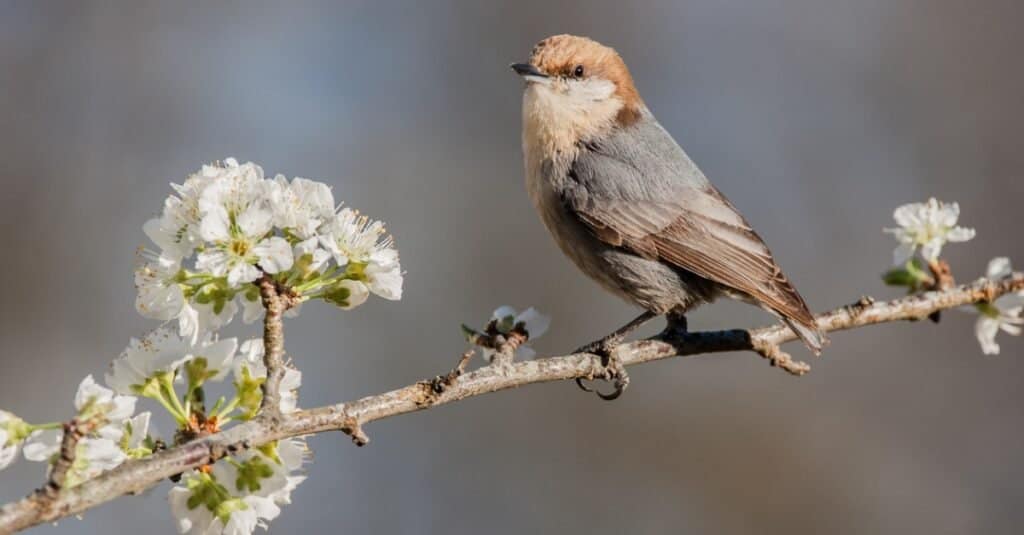
You can put out birdseed if you want to see brown-headed nuthatches in your yard.
©iStock.com/MattCuda
This tiny songbird only grows up to 5 inches long and has gray on its back, a brown cap on its head, and a white belly and throat. Brown-headed nuthatches also have a chisel-shaped black beak.
If you want to see a brown-headed nuthatch, observe dead trees, where they create nests in holes or cavities. They live in pine forests and eat seeds and insects, hanging upside down and hopping around when looking for food. They’ll also come into your backyard if you put out bird seed with sunflower seeds, nuts, and suet.
8. Blue Jay
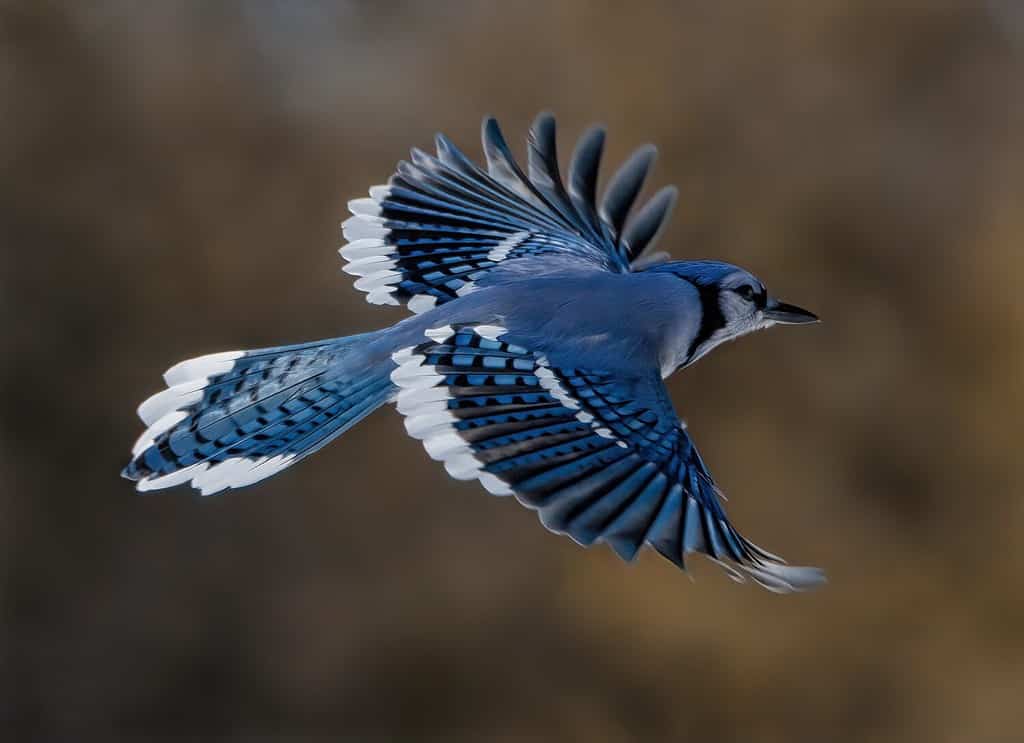
Blue jays are beautiful birds, but they can be aggressive and territorial.
©Fiona M. Donnelly/Shutterstock.com
A blue jay can grow up to 11.8 inches long, making it bigger than most others in the area. It has a blue and black back, a white underside, and a blue crest. These birds are noisy and travel in groups, and they often raid other nests and eat other birds’ eggs.
You can find blue jays near oak trees in forests because they eat acorns, insects, nuts, grain, and seeds. They sometimes appear in backyards near bird feeders, depending on the type of food you fill them with. Blue jays are territorial and unafraid to chase competition away while hoarding food instead of leaving some for others.
9. Brown Thrasher

The official state bird of Georgia is a brown thrasher, and you can find them there year-round.
©iStock.com/johnandersonphoto
Brown thrashers are brown songbirds with a streaked belly, yellow eyes, and black beak. They typically dig through sticks and leaves to find bugs for food. These birds also might pick up seeds from the ground but don’t usually go on birdfeeders.
Brown thrashers are the official state bird of Georgia and live in forests or other areas of heavy vegetation. You might see them on the outskirts of the woods or in dense shrubbery where they can search for what they need. They are defensive of their territory, and it’s not unusual for them to attack people who get close to their nest.
10. Northern Mockingbird
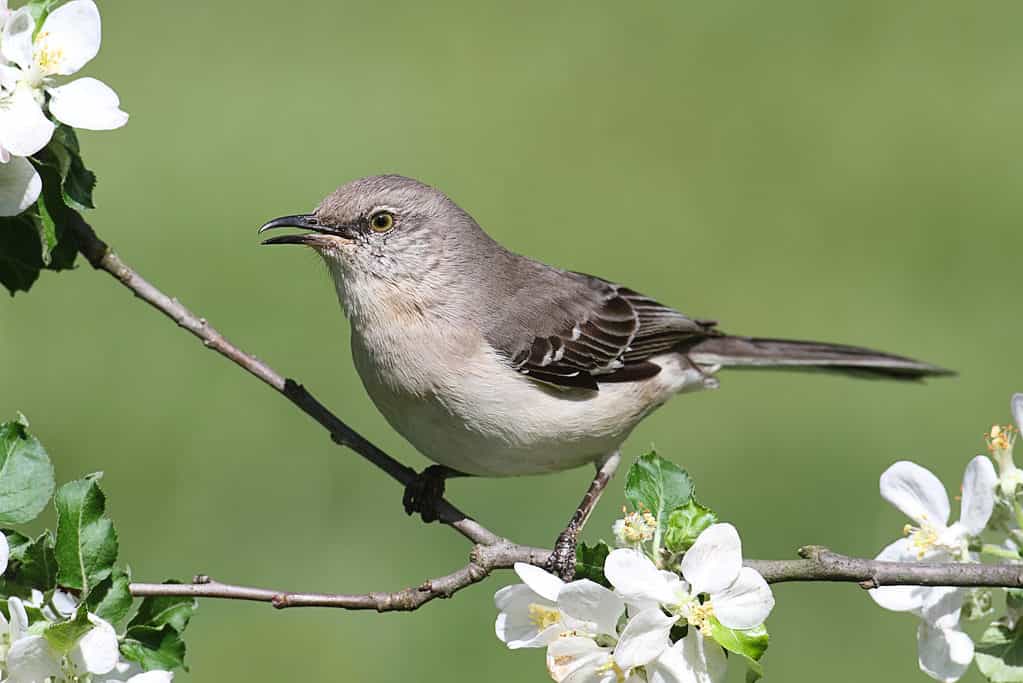
A northern mockingbird can mimic up to 200 songs from other bird species.
©Steve Byland/Shutterstock.com
Mockingbirds can sing songs of other bird species, which is one of the reasons they have the name. Northern mockingbirds are gray and white with long tail feathers, standing out amongst other birds. They prefer living in tall bushes and don’t enjoy intruding birds entering their space.
You won’t often see Northern mockingbirds at your bird feeders, although they frequent backyards. Instead, they’re attracted to yards with fruit bushes and bird baths.
Best Places to See Birds That Spend Their Winters in Georgia
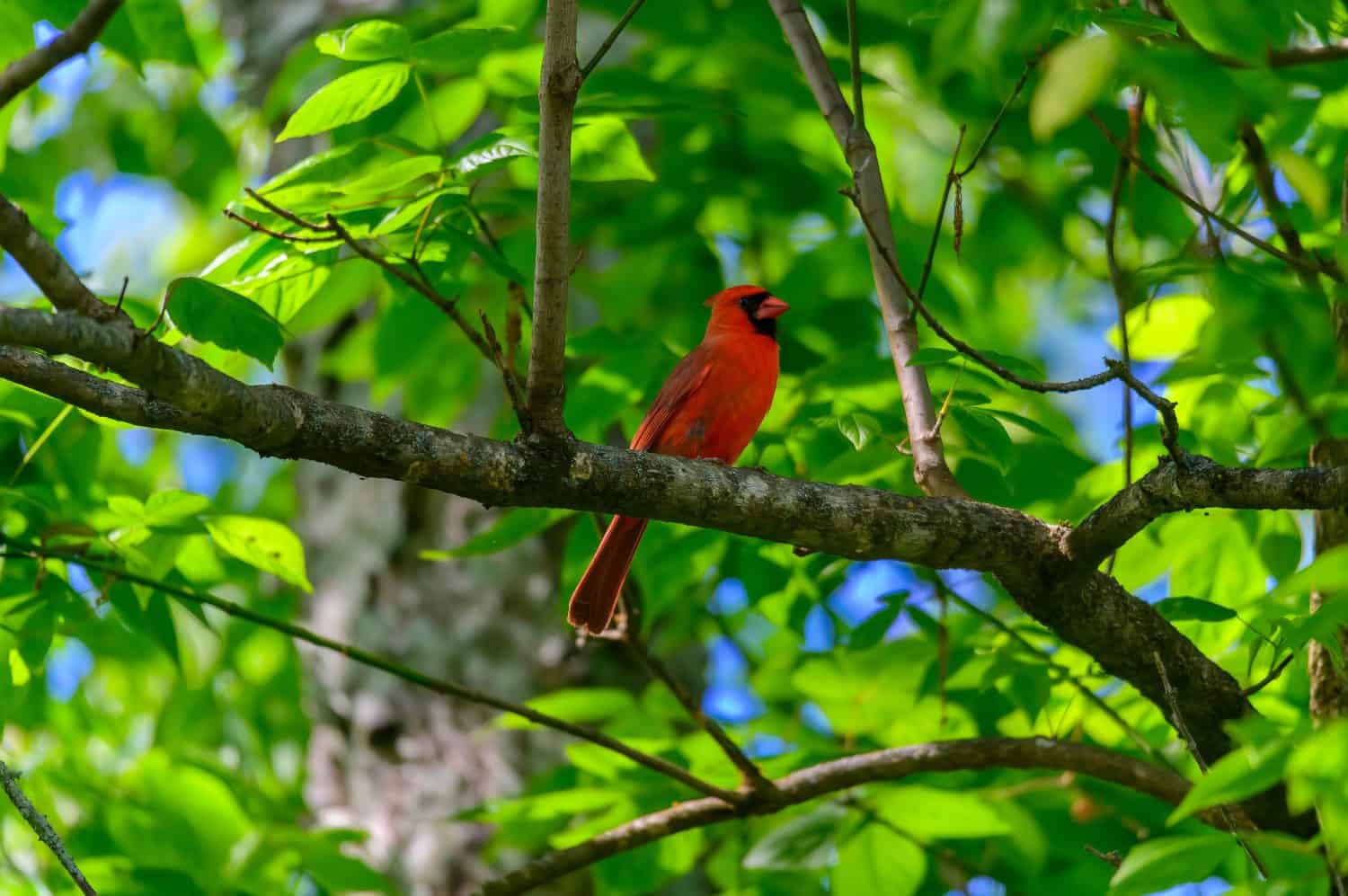
You can go birding in Georgia at the Chattahoochee Nature Center in Roswell.
©James W. Thompson/Shutterstock.com
There are many ideal locations to spot winter birds in Georgia. The Atlanta History Center’s Goizueta Gardens is a registered wildlife sanctuary and hotspot for birding enthusiasts. It does require admission, however.
There are many birding trails to explore in Georgia, or you can join the Georgia Audubon Society for workshops, events, birding tours, meetups, and field trips. Birding hotspots in Georgia can be found throughout the state, including at the Chattahoochee-Oconee National Forest.
Another incredible place to see birds is on Georgia’s Colonial Coast Birding Trail, where you can explore beaches, indulge in history, and watch for birds. You can also visit Dawson Forest Wildlife Management Area to watch for birds in a marshy wetland.
Summary of Birds That Spend Their Winters in Georgia
| Number | Bird |
| 1 | Carolina chickadee |
| 2 | Chipping sparrow |
| 3 | Northern cardinal |
| 4 | Tufted titmouse |
| 5 | Downy woodpecker |
| 6 | Red-bellied woodpecker |
| 7 | Brown-headed nuthatch |
| 8 | Blue jay |
| 9 | Brown thrasher |
| 10 | Northern mockingbird |
The photo featured at the top of this post is © James W. Thompson/Shutterstock.com
Thank you for reading! Have some feedback for us? Contact the AZ Animals editorial team.







